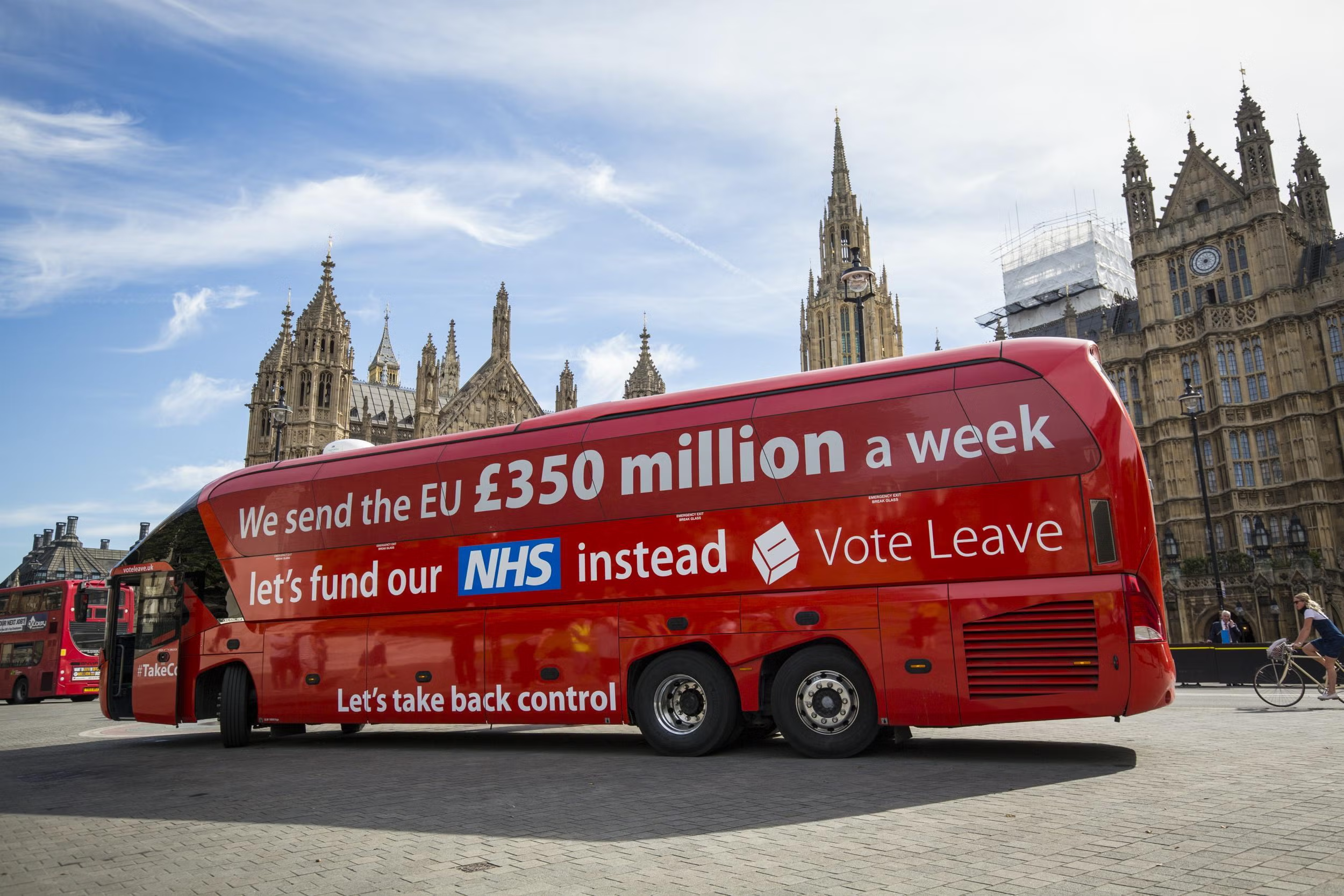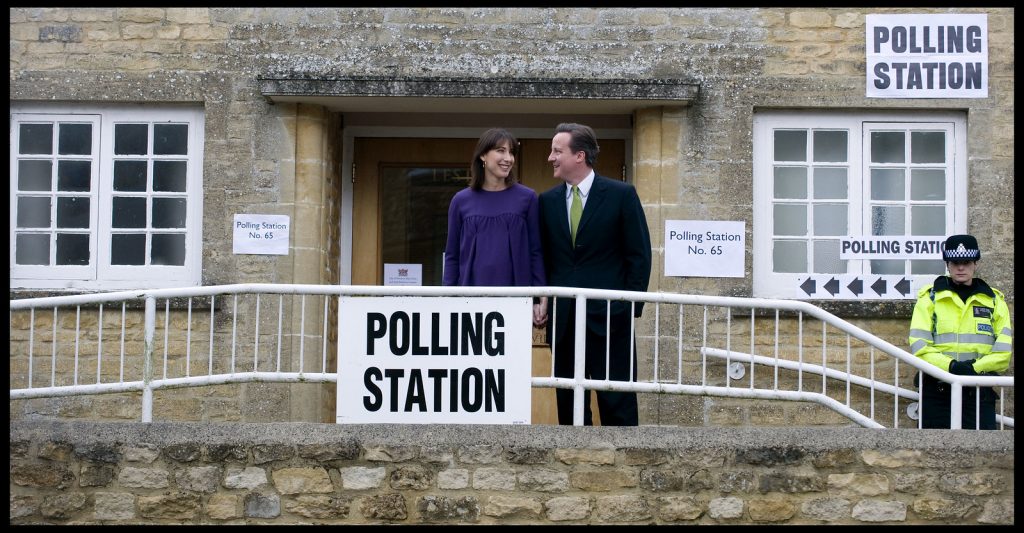Did Brexit awaken Britain’s electorate?
Political participation refers ‘to those activities by private citizens that are more or less directly aimed at influencing the selection of governmental personnel and/or the actions they take’ (Verba and Nie, 1972, p.2).
Introduction- The Brexit Referendum
Political participation has tended to be a mixed bag in the United Kingdom. General elections can see upwards of 65% turn out rate, whereas local election tend to average around a 40% turn out rate, HOC Library report. When the Brexit referendum was held in 2016 the turnout rate was often speculated about. However the Brexit vote proved ‘a turnout of 72.2%’ (Electoral Commission UK), the highest turnout since the 1992 general election. The referendum showed a high rate of political participation, awakening a staggering 72% of voters, but why?

Participation- Vote Leave
The Brexit referendum was a highly anticipated and broadcasted event. Membership of the EU was a deeply contested issue within the UK. A massive campaign broke out, vote Leave against those who advocated to Remain. The ‘Brexit’ campaign was a deeply successful one, it looked at ‘an initial quest to identify causes of discontent’ (Burca, 2018, pg.46). The ‘Brexit’ campaign was backed by influential politicians, namely Boris Johnson and Nigel Farage. The campaign focused heavily on issues like immigration, with the mantra that voting Brexit would allow Britain to ‘Take Back Control’. The campaign resonated with people across the country, immigration was an issue becoming more prominent, making the Brexit campaign stand out to the electorate. Crafty campaigning by the vote leave camp meant many working and middle class voters, with little relationship with the EU, were being shown the benefits that leaving it could have. One of the most influential tools was the so called Brexit Bus, driving around the country claiming leaving the EU would give the NHS £350 million a week in extra funding.

Participation- Vote Remain
The Brexit vote gave two very clear and simple options, to leave or to remain. The remain campaign took on a much more cautious approach to the referendum. Led most prominently by the Prime Minister at the time David Cameron. The Remain campaign advocated for ‘a clear message about winning a better deal for the country in a reformed EU’ (Glencross, 2018, pg.23). The Remain campaign advocated for stability and promoting the benefits the EU membership had for the UK, such as security. However, the Remain campaign did not have the upper hand on the campaign, ‘Leave camp had the simpler, more persuasive policy’ (Glencross, pg.23). Nonetheless, the Remain campaign was voiced loudly to the electorate, the high offices in the government of the time were held by Remain advocates. Many people felt staying in the EU was a better choice for them and the country.

Why did people vote?
One of the biggest advantages the EU membership referendum had was that it was a clear cut referendum, people had the choice of two simple options, to leave or remain. Having such a simple message allowed campaigning on both sides to reach the minds of the electorate and tap into all areas that people care about, the referendum was about more than any single political party. The result was by no means a landslide, ‘51.9% of all voters voted to leave the European Union’ . The outcome showed that both sides of the campaign had a strong turnout, 16 million for remain and 17 million people for leave. The Centre for Social Investigation produced a report showing that the main reason people voted to Remain was due to the EU’s lack of control over immigration. In contrast, the main reason people voted to remain was to avoid damaging the UK’s economy. The campaign around the EU referendum took on a very domestic, personal feel, particularly than of the Leave campaign. Regular voters, with little relationship with the EU were awoken by these claims of ‘Taking Back Control’, something that resonated deeply with a lot of people. On the other hand the Remain campaign encouraged those who prioritised maintaining a relationship with the EU to come out and vote to remain a part of one the largest organisations in the world. The EU referendum saw a large rate of participation because it took on a very broad scope. No matter what a person’s political beliefs it was likely one of the campaigns would have points that resonated with them.
Bibliography
CSI, (2018) ‘Peoples Stated Reasons for Voting Leave or Remain’. (Accessed 19/04/24)
House of Commons Library, (2023) ‘Turnout at elections’. (Accessed 19/04/2024)
Glencross, A. (2018). ‘Cameron’s European Legacy: How Brexit demonstrates the flawed politics of simple solutions’. Brexit and Beyond: Rethinking the Futures of Europe, pp.22-27.
De Burca, G. (2018). ‘How British was the Brexit vote?’ Brexit and Beyond: rethinking the Futures of Europe, pp.46-52.
Brexit results available at –Results and turnout at the EU referendum | Electoral Commission (Accessed 20/04/24)
Verba, Sideny, et al. (1972) Participation and Political Equality: A Seven Nation Comparison. Cambridge University Press.
This blog post is well-organised and easy to follow. Each section is clearly labelled with a subheading making it easy to understand the content which is going to be explained. The blog uses several relevant and in-depth academic sources to support their arguments providing valuable additional context. However, I believe it would have been beneficial to provide more in-text citations just to give the strong arguments more clarity. The author effectively presents both the Vote Leave and Vote Remain perspectives going in-depth to discuss the strategies and appeals used by both campaigns. This was shown when the author stated that the Vote Leave Campaign emphasises issues like immigration and sovereignty under the Take Back Control slogan and the Remain campaign more on the benefits of EU membership such as economic security. Overall this blog is clear and well-written effectively analysing the increased political participation.
This bog post highlights the high turnout of the Brexit referendum, highlighting the power of emotionally charged messages to the public as well as the stark differences between the leave- remain campaigns, with the leaves campaign focusing on sovereignty, the remain campaign focused more on stability.
The authors analysis highlights an important part of political participation, when the stakes are high and there is a clear message to voters, there is more likely to be a high voter turnout Overall this blog post is well structured with clear subheadings making it easy to read, it also offers a comprehensive overview of the dynamics that led to such a high voter turnout in the referendum. It would be interesting to see if and how the Brexit Referendum influenced political participation in the years since and whether it has sparked a lasting change in Britain’s electoral engagement with politics.